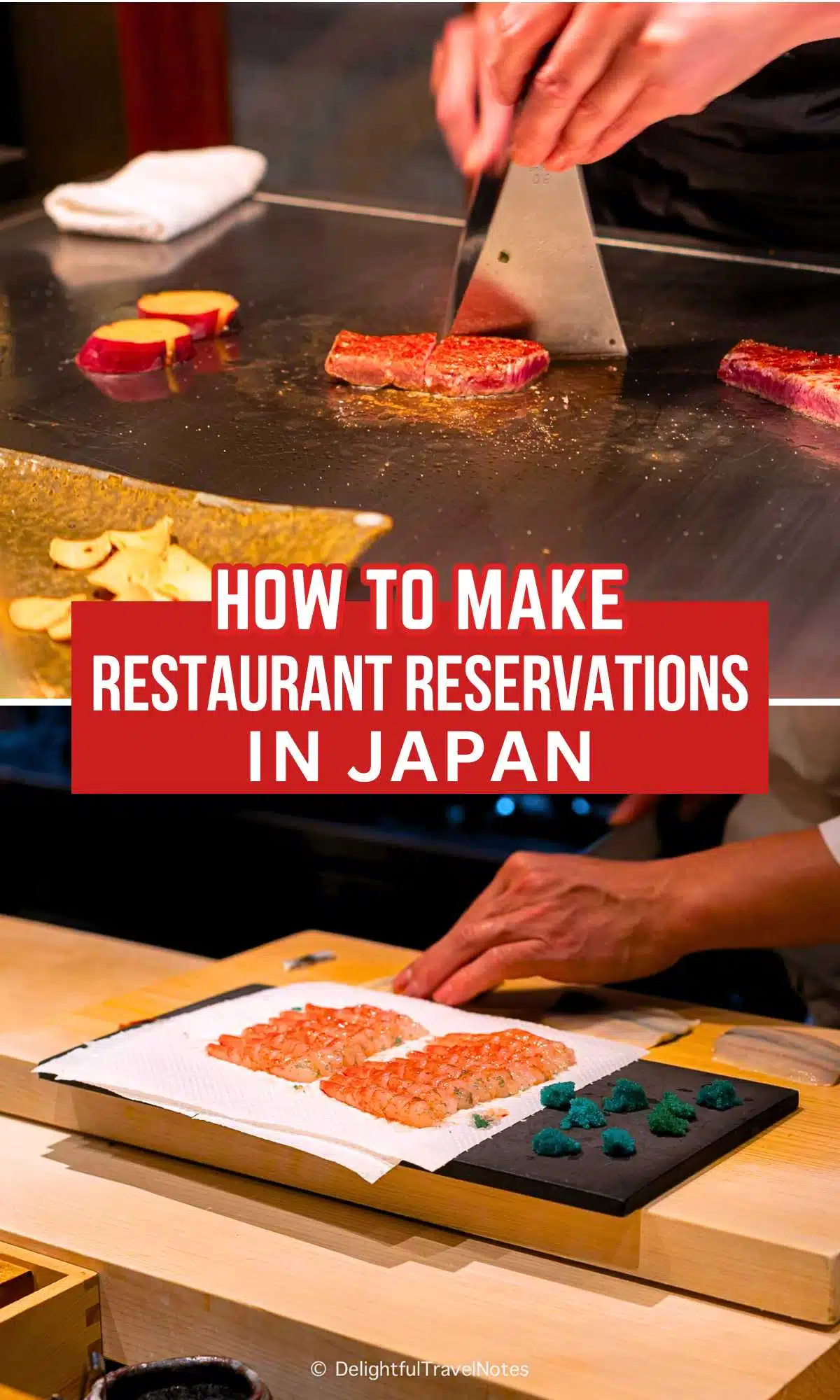Restaurant Reservations in Japan: A Comprehensive Guide
One of the absolute highlights of visiting Japan is the incredible food. Here’s all the essential information you need to know about making restaurant reservations in Japan.
Are Reservations Necessary?
It depends on your priorities and dining preferences. If food is not your main focus or you are flexible with where and what you eat, then you can likely get by without making any reservations. Japan has a high standard of food overall, so you will certainly be able to find decent options without much planning.
However, if you are someone who comes from a place where high-quality Japanese food is available, as in my case, you may have higher expectations. Not every random spot will meet your standards.
For those seeking a more elevated experience, like fine dining, omakase, or popular, famous and Michelin-starred restaurants, making a reservation is highly recommended. Many of these places don’t accept walk-ins, have very limited seating and are in high demand.
Lastly, if you are not a fan of spending your precious time in Japan waiting in line when you could be out exploring or enjoying your trip, maybe it is also a good idea to make some dinner reservations.
Striking A Balance
I think having the right balance is quite essential. Don’t make reservations for every single meal of the day as it will make your schedule too rigid and stressful. On the other hand, skipping reservations entirely may mean missing out on some incredible dining experiences (plus time wasting on browsing what to eat or waiting in line).
Avoid overloading your trip with too many fine dining, omakase, or kaiseki dinners because they can be time-consuming. Our dinner at La Terrasse was 3 hour long, for example. For us, having back-to-back omakase experiences, in particular, can feel a bit exhausting, as they demand both time and attention to fully enjoy.
What we usually do is reserving a couple of omakase/fine-dining dinners each trip, plus several mid-tier restaurants where we want to try specific dishes. Beyond that, I like to keep things flexible. I usually do some research in advance and bookmark interesting places on Google Maps. This way, we can choose where to eat based on where we are or what activities we’ve done that day, without being locked into a rigid schedule.
Best Ways to Make Restaurant Reservations in Japan
Making restaurant reservations in Japan can sometimes be tricky, mainly due to language barriers and some restaurants being cautious about foreign travelers who might cancel at the last minute. However, there are plenty of methods to help make the process easier. Below are the most common ways to secure a table, with some being more convenient than others.
Online Booking Platforms
This is our go-to method for reserving restaurants in Japan, as it provides flexibility and ease of use. These are the most popular platforms:
- Google Maps: While this option usually is not for high-end places, it is handy for booking decent and even some popular mid-tier restaurants. The Google Maps listings allow you to make reservations directly.
- TableCheck: This platform supports English, making it easy to search for restaurants, check availability, and make bookings. It’s pretty great for a variety of restaurant types.
- Ikyu: Another reliable booking platform we use. Some restaurants may accept or decline reservations through Ikyu, and occasionally they request foreign guests to book via a different platform. Ikyu is in Japanese only, and we need to use the translation feature of the browser to make the reservation.
- Omakase: A booking service for high-end and Michelin-starred restaurants in Japan.
- TableAll: Also a booking platform for high-end restaurants but this one has a very high booking fee, so we have not used it.
- Pocket Concierge: Another booking service for high-end and Michelin-starred restaurants in Japan.
- Jpneazy: We’ve used this platform once. It charges a booking fee (around 10% of the course price), but it’s usually lower than TableAll’s fees.
- Tabelog: Japan’s most extensive restaurant listing and review site. It has a reservation feature but I find its interface quite cumbersome. We use it for researching restaurants and checking ratings rather than making reservations.
From our experience, Ikyu, TableCheck, Omakase, and Google Maps work well for us, and all our reservations have gone smoothly. Ikyu platform even allows diners to accumulate points (1-2% of total meal costs) which can be applied to reduce the cost of the meals. Be aware that some restaurants may require pre-payment for your meal when reserving.
If you want to reserve top-tier restaurants, book as early as possible. These high-demand spots fill up quickly after reservations open. With those places, it’s a good idea to research when the restaurants release their booking slots for your travel month or date and be ready to secure a reservation as soon as those slots become available.
Direct Reservations with Restaurants
Some restaurants may have direct online reservations on their official websites. For instance, Kobe Beef Steak Ishida has an online form where we could select our date and time, and they emailed back to confirm.
If you speak Japanese or have a Japanese-speaking friend, calling the restaurant directly is also an option. I have read that some travelers make calls from abroad and manage to secure reservations this way.
Hotel Concierge Services
Concierges can make reservations on your behalf, but mostly at high-end or luxury hotels. We used the concierge at Hotel Celestine Gion to help us reserve lunch at Hassun in Kyoto. The Shisui Nara offered to arrange dinner reservations for us, but we were able to book them ourselves via online platforms.
Takeaways
Overall, I think it is worth it to splurge on some higher-end meals in Japan for a memorable trip. Yes, it may require a bit of research and effort to make reservations before you go, but as long as you don’t overwhelm yourself by trying to book too many places, the process won’t be overly stressful or frustrating.
In some cases, if you don’t have a reservation and find yourself turned away from all the restaurants you come across due to full bookings or long lines, don’t worry – there is always a great fallback option. Head to depachika (department store basement food halls), which offer an impressive selection of good quality bento boxes, sweets and other delicious ready-to-eat meals.
Here are some of our Japan travel food guides and restaurant recommendations:
- Explore Kyoto Cuisine: Top Local Foods and Restaurants to Try
- Fun Eats To Try In Osaka
- Must-try Foods in Kanazawa and Restaurant Recommendations
- Yakitori Omakase in Japan – Here’s What to Expect
If you found this article helpful, please consider sharing it on Pinterest! Thank you so much!



Explore More
Review: Madoka no Mori Ryokan in Hakone
Top 12 Best Ryokan in Hakone with Private Onsen
Arashiyama Self-Guided Walking Tour & Things to Do